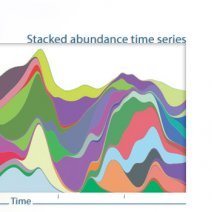Chaotic turnover of rare and abundant species in a strongly interacting model community
Emil Mallmin, Arne Traulsen, Silvia De Monte.
The composition of ecological communities varies not only between different locations but also in time. Understanding the fundamental processes that drive species toward rarity or abundance is crucial to assessing ecosystem resilience and adaptation to changing environmental conditions. In plankton communities in particular, large temporal fluctuations in species abundances have been associated with chaotic dynamics. On the other hand, microbial diversity is overwhelmingly sustained by a "rare biosphere" of species with very low abundances. We consider here the possibility that interactions within a species-rich community can relate both phenomena. We use a Lotka-Volterra model with weak immigration and strong, disordered, and mostly competitive interactions between hundreds of species to bridge single-species temporal fluctuations and abundance distribution patterns. We highlight a generic chaotic regime where a few species at a time achieve dominance but are continuously overturned by the invasion of formerly rare species. We derive a focal-species model that captures the intermittent boom-and-bust dynamics that every species undergoes. Although species cannot be treated as effectively uncorrelated in their abundances, the community’s effect on a focal species can nonetheless be described by a time-correlated noise characterized by a few effective parameters that can be estimated from time series. The model predicts a nonunitary exponent of the power-law abundance decay, which varies weakly with ecological parameters, consistent with observation in marine protist communities. The chaotic turnover regime is thus poised to capture relevant ecological features of species-rich microbial communities.
Proc Natl Acad Sci U S A. 2024 Mar 12 ;121(11):e2312822121. doi : 10.1073/pnas.2312822121.


